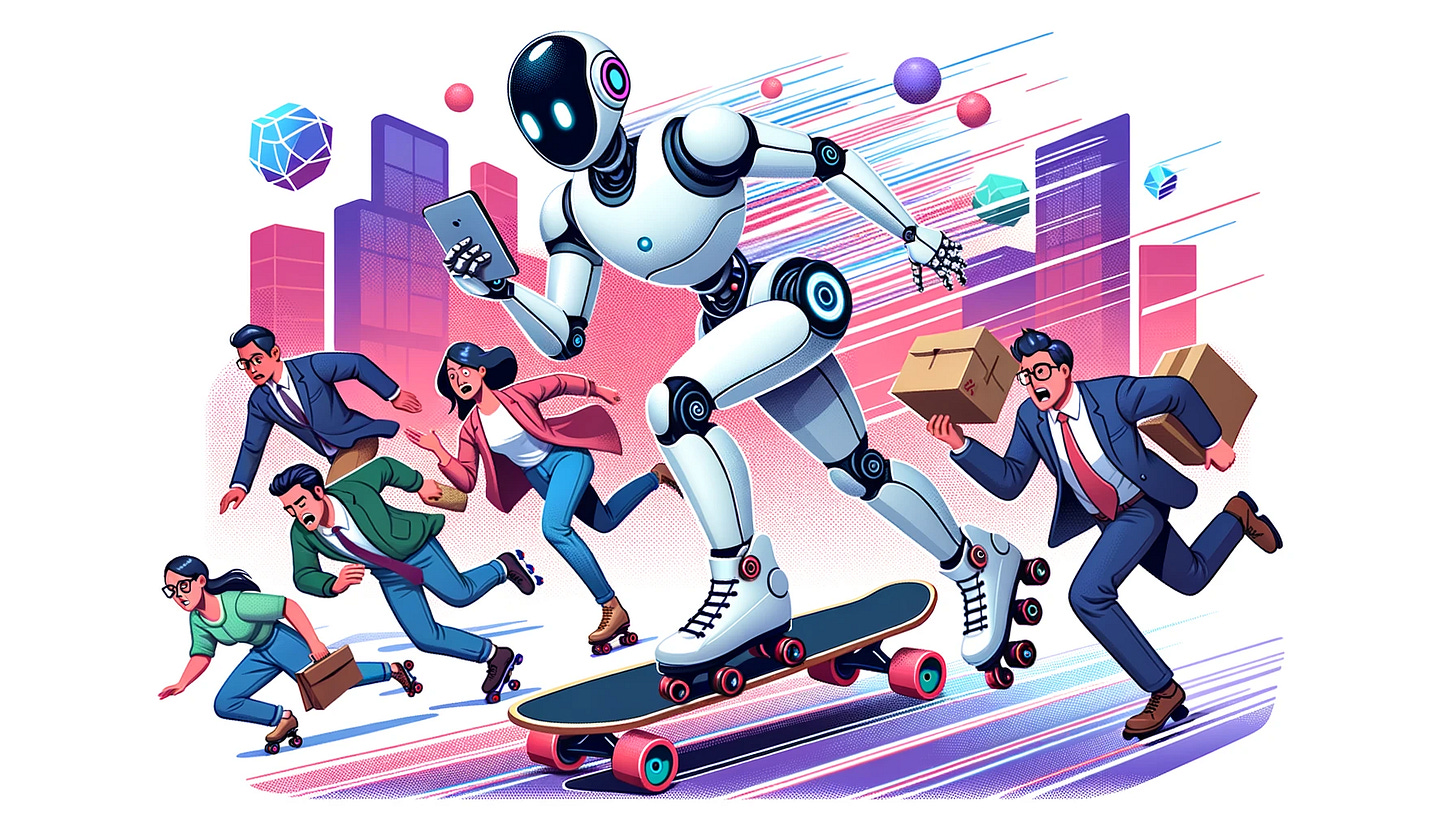14 | Ten Mistakes NOT To Make With AI

I sat in on a webinar yesterday from AI for Education, where they discussed top mistakes educators make when approaching AI. I really liked the list and the memories it spurred of my naivete in exploring AI! I’ve adjusted the list slightly and, with the help of ChatGPT and Claude, I’ve fleshed out descriptions of each.1
1. Not trying it
The Mistake: Sitting on the fence and not giving AI a chance at all OR being frustrated/disappointed at what you get and walking away.
Consequences: By avoiding AI, you miss out on working up the learning curve that comes with integrating new technology. This is essential for mastering how to use AI tools effectively, which could provide significant advantages in terms of data analysis, task automation, and strategic decision-making. Essentially, not engaging with AI robs you of the opportunity to become proficient and resourceful in leveraging it for your mission.
2. Using GenAI like Google or web search
The Mistake: Treating AI as just another search engine.
Consequences: If you're using AI as a glorified Google, you run the risk of being distracted by erroneous responses (see #4) and you’re missing out on the vast capabilities that the AI tools offer. Want to look up a fact? Go to Google (or your favorite search engine/website). Want a thought partner? Try AI.
3. Stopping after one prompt
The Mistake: Asking only one question or giving a single prompt and then disengaging.
Consequences: The key to effectively leveraging AI is iteration - not simply accepting the first response. Refine and reframe prompts, ask follow-up questions, and dig deeper to get quality results. Be an active user.
4. Not checking for hallucination and bias
The Mistake: Blindly trusting the AI's output without scrutiny.
Consequences: Like any technology, AI models have flaws and biases. Be wary of responses that seem illogical or prejudiced. Probe the reasoning behind answers to catch hallucinated or biased information. Don’t trust - verify!
5. Not admitting AI usage
The Mistake: Keeping it a secret that you're leveraging AI.
Consequences: Lack of transparency can breed mistrust among team members and could also result in ethical questions, especially in academic settings.
6. A fixed mindset / not being open to experimentation
The Mistake: Resisting change and sticking to old ways.
Consequences: To fully leverage AI's opportunities, remain open-minded. Be flexible and willing to try different approaches until you get the results you want. AI thinking diverges from human reasoning - be creative.
7. Lack of persistence in learning how to work with the tools
The Mistake: Giving up too easily when faced with the learning curve.
Consequences: Without a proper understanding of the tool, you won't be able to tap into its full potential. This could mean missed opportunities for automation, data analytics, and more. As with so many skills, experimentation and practice are key to mastery.
8. Not using GenAI as a thought partner
The Mistake: Treating AI merely as a tool rather than a collaborator.
Consequences: When used well, AI can help brainstorm, offer creative solutions, and provide insightful analytics. Not treating it as a thought partner limits your scope of problem-solving.
9. Getting stuck in a rut
The Mistake: Using AI for the same, repetitive tasks without exploring its other capabilities.
Consequences: Don't just use AI to reinforce existing thought patterns. Push the boundaries of your knowledge and go down unexpected paths. Leverage AI's associative capabilities to make connections you would not on your own.
10. Not having fun and being open to learning along with the advancements
The Mistake: Viewing AI as a chore rather than an exciting field full of potential.
Consequences: Look, if you're treating AI like it's another item on your tedious to-do list, you're doing it wrong. Technology thrives on innovation and excitement. A dull approach not only sucks the life out of the room but also hampers your ability to ride the wave of constant technological advancements. Stay curious, stay engaged, and hey, let yourself have some fun with it!2
In a nutshell, AI offers immense possibilities but it's not a magic wand. Avoiding these mistakes will not only help you make the most of this technology but will also set you on a path of continuous learning and innovation.
And in all candor, when I think of my early experimenting with AI, I made most of these mistakes, many times over. But now I’m finding that it’s a daily go-to tool, and I kick myself when I spend time doing something that it could’ve done for me!
My uses of AI Assistants to help in the creation of this article are described in the footnotes below. Please add Comments about your own experiences!
My prompt was: “I'm writing an article for StrefaTECH titled "10 Mistakes NOT To Make With AI" ... the list of mistakes is below. Draft the article, writing 1-2 paragraphs for each item discussing what the mistake is and what the consequences might be of doing it“ followed by the numbered list items. I submitted the same prompt to ChatGPT and Claude, which gave notably different responses. In the spirit of not making mistake #5, I’m fessing up that today’s article was written with substantial help from AI!
As a note, the responses I got for #10 were anything but “fun,” so I asked ChatGPT to try again. My prompt: “For #10, the consequences seems stilted. Can you rewrite it to have a bit more zing?“ Its response was more or less what’s above—much better than the original try. I do this a LOT, avoiding mistake #3!


